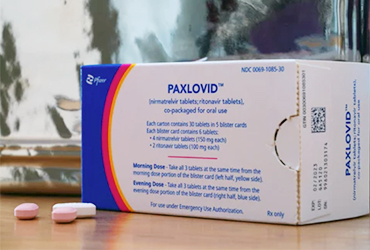Report on Merck’s Investigational HIV Therapy and its Alignment with Sustainable Development Goals
Introduction: Advancing SDG 3 Through Innovative HIV Treatment
The U.S. Food and Drug Administration (FDA) has accepted a New Drug Application for Merck’s investigational combination therapy, doravirine/islatravir (DOR/ISL). This development marks a significant step toward achieving Sustainable Development Goal 3 (SDG 3), specifically Target 3.3, which aims to end the epidemic of AIDS by 2030. The once-daily oral regimen, if approved, could provide a new, simplified treatment option for adults with virologically suppressed HIV-1 infection, improving health outcomes and quality of life. A Prescription Drug User Fee Act (PDUFA) target date has been set for April 28 of the upcoming year.
Clinical Trial Efficacy and Contribution to Health Outcomes
The regulatory submission is supported by data from two comprehensive Phase 3 clinical trials designed to evaluate the safety and efficacy of switching to DOR/ISL from established antiretroviral therapies. The success of these trials directly supports the global health objective of providing effective and manageable long-term care for individuals living with HIV.
Phase 3 Program Overview
The clinical program was designed to demonstrate that DOR/ISL is non-inferior to current standard-of-care treatments, a critical factor for introducing new therapies that can simplify regimens without compromising viral suppression.
- MK-8591A-051 (Open-Label Study): This trial evaluated a switch to DOR/ISL from a stable baseline antiretroviral therapy (bART).
- Design: Randomized, active-controlled, open-label trial.
- Population: 551 adults with virologically suppressed HIV (HIV RNA <50 copies/mL).
- Intervention: Participants were randomized 2:1 to switch to DOR/ISL (100mg/0.25mg) (n=366) or continue their bART (n=185).
- Primary Endpoint: The percentage of participants with HIV RNA ≥50 copies/mL at Week 48, with a non-inferiority margin of 4%.
- MK-8591A-052 (Double-Blind Study): This trial evaluated a switch to DOR/ISL from a specific combination regimen, bictegravir/emtricitabine/tenofovir alafenamide (BIC/FTC/TAF).
- Design: Randomized, active-controlled, double-blind trial.
- Population: 513 adults with virologically suppressed HIV on BIC/FTC/TAF.
- Intervention: Participants were randomized 2:1 to switch to DOR/ISL (n=342) or continue BIC/FTC/TAF (n=171).
- Primary Endpoint: The percentage of participants with HIV RNA ≥50 copies/mL at Week 48, with a non-inferiority margin of 4%.
Key Findings and Implications for SDG Target 3.3
Efficacy and Safety Results
In both Phase 3 trials, DOR/ISL successfully met its primary non-inferiority endpoint. Over 90% of participants in both the DOR/ISL and comparator arms maintained viral suppression at Week 48. The safety profile of DOR/ISL was found to be generally comparable to the existing antiretroviral regimens used in the trials. These results confirm that the investigational therapy is as effective as current standards of care in maintaining viral control.
Impact on HIV Management and Global Health Goals
The development of an effective two-drug, once-daily regimen is a crucial advancement for HIV management and directly supports the ambitions of SDG 3. By simplifying treatment, DOR/ISL has the potential to improve medication adherence, reduce the long-term pill burden, and enhance the overall well-being of people living with HIV. Such innovations are fundamental to the global strategy to end the AIDS epidemic by making lifelong therapy more manageable and sustainable. Furthermore, by providing more diverse and simplified treatment options, this therapy can contribute to SDG 10 (Reduced Inequalities) by helping to mitigate health disparities among populations affected by HIV.
Profile of Therapeutic Agents and Future Research
Component Agents
The combination therapy leverages two distinct mechanisms of action to suppress HIV replication.
- Doravirine: An FDA-approved (2018) non-nucleoside reverse transcriptase inhibitor (NNRTI).
- Islatravir: An investigational nucleoside reverse transcriptase translocation inhibitor (NRTTI) that blocks HIV-1 replication through multiple mechanisms, including immediate and delayed chain termination.
Future Directions in HIV Therapy
Islatravir’s potential extends beyond the DOR/ISL combination, positioning it as a cornerstone for future HIV treatment paradigms in line with long-term SDG 3 objectives. Ongoing research includes:
- A Phase 3 trial studying islatravir in combination with Gilead’s lenacapavir as a once-weekly oral treatment.
- A Phase 2 trial studying islatravir in combination with Merck’s investigational NNRTI, ulonivirine, also as a once-weekly oral regimen.
This robust research pipeline underscores a continued commitment to developing next-generation therapies that are less frequent and easier to administer, which is essential for the sustained, long-term management required to end the global AIDS epidemic.
1. Which SDGs are addressed or connected to the issues highlighted in the article?
-
SDG 3: Good Health and Well-being
- The article’s entire focus is on the development and clinical trials of a new medication, doravirine/islatravir (DOR/ISL), for the treatment of Human Immunodeficiency Virus (HIV). This directly contributes to improving health outcomes, managing a major communicable disease, and advancing medical science, which are core components of SDG 3.
2. What specific targets under those SDGs can be identified based on the article’s content?
-
Target 3.3: By 2030, end the epidemics of AIDS, tuberculosis, malaria and neglected tropical diseases and combat hepatitis, water-borne diseases and other communicable diseases.
- The article discusses a new investigational therapy for HIV. The development of more effective and simplified treatments like the “once-daily, oral” DOR/ISL is a fundamental strategy in the global effort to manage and end the AIDS epidemic. The drug’s proven efficacy in “maintaining viral suppression” is crucial for preventing disease progression and transmission.
-
Target 3.8: Achieve universal health coverage, including financial risk protection, access to quality essential health-care services and access to safe, effective, quality and affordable essential medicines and vaccines for all.
- The development of DOR/ISL as a “new complete regimen option” is aimed at improving the quality of care for people living with HIV. The article states the goal is to “help meet their diverse needs,” including simplifying previously “complex medication regimens.” The FDA review process described is a critical step toward ensuring the medicine is safe and effective, making it a potential new “essential medicine” for HIV treatment.
-
Target 3.b: Support the research and development of vaccines and medicines for the communicable and non-communicable diseases that primarily affect developing countries…
- The article is a direct report on the research and development (R&D) process for a new HIV drug. It explicitly details the “2 phase 3 clinical trials (MK-8591A-051 and MK-8591A-052)” conducted by Merck. It also highlights ongoing R&D, noting that islatravir is being studied in other phase 2 and phase 3 trials, which perfectly aligns with the goal of supporting medical research for communicable diseases.
3. Are there any indicators mentioned or implied in the article that can be used to measure progress towards the identified targets?
-
For Target 3.3 (End AIDS epidemic):
- Viral Suppression Rate: The article explicitly states that in the clinical trials, “over 90% of individuals in both treatment groups maintaining viral suppression.” This percentage is a direct indicator of treatment efficacy.
- Proportion of patients with HIV RNA ≥50 copies/mL: This is the specific technical indicator used as the “primary efficacy endpoint” in the trials to measure treatment success. A low percentage demonstrates the drug’s effectiveness in controlling the virus.
-
For Target 3.8 (Access to quality medicines):
- Development of simplified treatment regimens: The article describes the new drug as a “once-daily, oral, treatment” and a “simplified regimen.” This simplification is an indicator of improved quality of care, as it can enhance patient adherence compared to more “complex medication regimens.”
- Regulatory Approval Status: The mention that the “new drug application [was] accepted by the FDA” and has a set “PDUFA target date” is a key milestone indicator of progress toward making a new, effective medicine available to the public.
-
For Target 3.b (Support R&D):
- Number of drugs in clinical trials: The article details two “phase 3 clinical trials” for DOR/ISL and mentions that islatravir is also in a separate “phase 3 trial” and “phase 2 development,” indicating a robust R&D pipeline.
- Innovation in drug mechanisms: The article describes islatravir as an “investigational NRTTI that blocks HIV-1 replication by multiple mechanisms,” which indicates progress and investment in developing next-generation treatments.
4. Table of SDGs, Targets, and Indicators
| SDGs | Targets | Indicators |
|---|---|---|
| SDG 3: Good Health and Well-being | 3.3: End the epidemics of AIDS… |
|
| SDG 3: Good Health and Well-being | 3.8: …access to safe, effective, quality…essential medicines… |
|
| SDG 3: Good Health and Well-being | 3.b: Support the research and development of…medicines… |
|
Source: contagionlive.com







